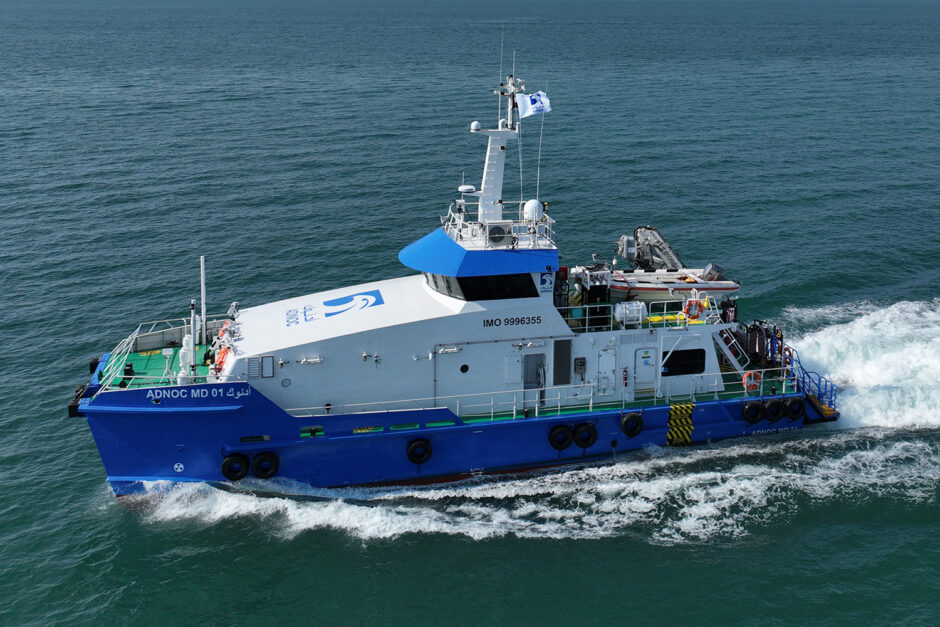Dive Dynamics
August 8, 2024

Our Visionary Approach to DSV Design
Evan Gatehouse | Project Director | Senior Naval Architect
As the Project Director for two recent dive support vessels (DSV) that showcase distinct challenges and innovations—I wanted to provide some insights into how Robert Allan Ltd. ensures each vessel meets a client’s distinct needs.
Belov Engenharia Ltda. required two large, liveaboard steel monohull DSVs (following spread) designed for two-week voyages to Petrobras’ offshore installations in Brazil. These vessels, measuring 40.5 meters in length and accommodating 38 crew members, presented a challenge in integrating all necessary dive equipment and crew cabins into the interior while keeping the vessel’s volume under 500 GT.
To meet the demanding DP2 standards for maximum redundancy, we incorporated triple bow thrusters, triple waterjets, and a diesel-electric propulsion system using four generators.
For diver safety, the vessels use waterjets for propulsion; a feature typically used at higher speeds but, in this case, designed to maintain a speed of 12 knots. To ensure this atypical slow speed wouldn’t cause unexpected issues, RAL’s CFD department conducted simulations to study the slow-speed exit flow from the jets while submerged, providing valuable insights that informed the final design.
Demonstrating a different set of innovations, our most recent DSV project involved designing two 24.9 m aluminum fast catamarans (opposite page) for the UAE’s Abu Dhabi National Oil Company (ADNOC), built by Grandweld Shipyard in Dubai.
These catamarans offer significant advantages for a smaller DSV, including reduced roll motions due to the two hulls, enhancing crew comfort during extended periods on station or at anchor. This reduced motion also makes it easier, and safer, for divers when they are entering and exiting the ocean. Diving operations can be conducted on either side of the vessel or from the integrated swim platforms at the stern.
The wider beam allowed for a spacious single dive equipment room which includes a dive monitoring control station, a diver rest area, and a decompression chamber. The deckhouse forward accommodates 3 double cabins, a mess, toilets, and a galley, all on the same level.
Additionally, a 6.5 meter workboat and crane are positioned atop the deckhouse, with compressed gas cylinders located on the deckhouse roof for ease of inspection and relocation ashore using the crane, rather than internal storage.
Due to the heavy outfitting of DSVs, a larger engine size than one used in a comparable-sized fast ferry was necessary. The main propulsion consists of two Baudouin 12M26.3 engines, each producing 1030 kW @ 2100 rpm, with four-blade conventional propellers. CFD analysis was also employed to estimate resistance, and our predictions closely aligned with the sea trials data, achieving 19.4 knots and surpassing the owner’s expectations.